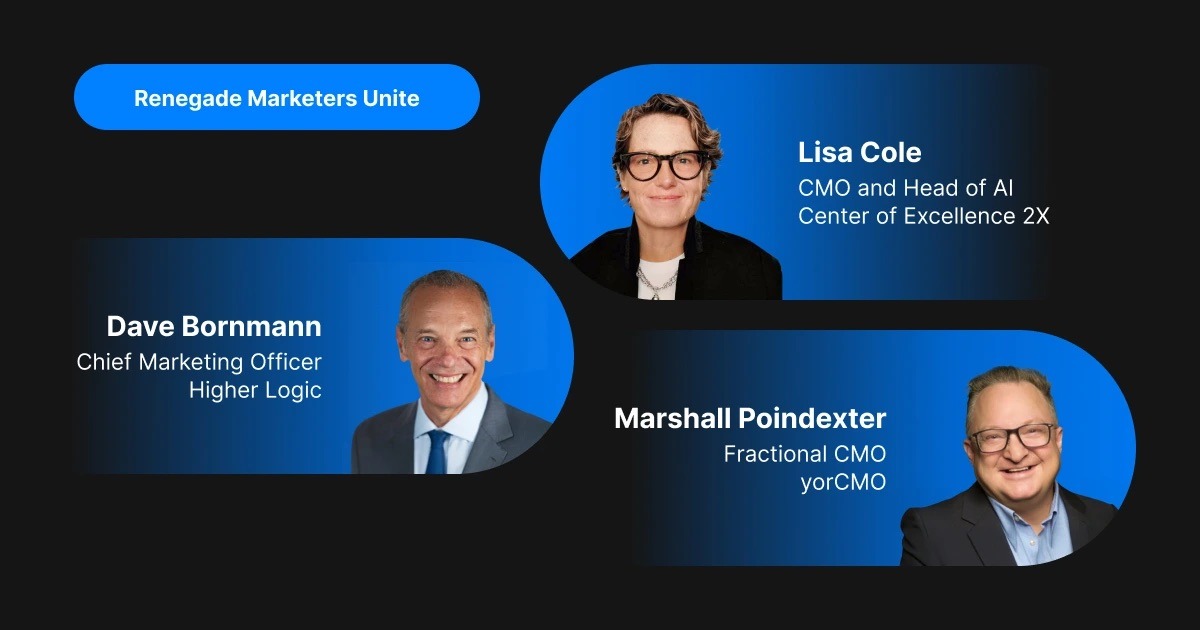March 2, 2021 | Blog
Not sure about MaaS? The top 5 questions, answered

Amidst cost-cutting measures in tough times, the last thing any organization should do is put a stop to their marketing activities. While there is a temptation to see marketing as just another cost center, the organization needs marketing more than ever to fuel sales and drive revenue. This puts marketing leaders in a unique two-fold challenge: to generate greater impact, with flat or shrinking budgets.
This is where marketing as a service (MaaS) comes in. The MaaS operating model combines the best of all worlds—in-house, freelance and on-shore agency—enabling organizations to scale their marketing and drive sustainable growth in a cost-effective way. Plus, you get to leverage MaaS resources, which means getting dedicated expertise and best practices as an extension of your own team.
The question is: Are you ready to adopt this organizational change for your organization to create revenue impact?
Making the transition to MaaS may not seem like an easy decision. But the more important question is this: What is the cost of delaying this transformation?
5 common concerns about transitioning to MaaS
The right time to transition to MaaS is now—simply because the longer your delay, the longer it’ll take for your organization to see the revenue impact.
Allow us to address some frequently asked questions:
1. Why work with an outsider when we already have our own processes and solutions?
Aside from your internal resources, martech is the most significant investment your marketing department can make—but the tech is only as good as the people running it. According to Gartner, marketing organizations only utilize 58% of their martech stack’s full capabilities and potential. This may be due to a lack of training, expertise, or agility of their people.
A MaaS provider brings deep expertise in martech like CRMs and automation platforms, which enables them to master any existing solution and adapt quickly. This also gives them the best vantage point to pinpoint areas for improvement while sharing best practices with your team to ensure optimal efficiency and results.
2. How do I know that these best practices actually add value to my activities?
According to a Gartner survey of marketing leaders, the top reasons cited for outsourcing marketing services include: improving operational efficiency, providing higher quality work, and the breadth and depth of skills and experience. With a MaaS partner, you can be assured that the best practices are developed through internal testing and the collective experience of working with various clients—organizations like yours who may be facing the same business problems.
By leveraging these tried-and-true methods, you’ll see better ROI from your sales and marketing activities. Plus, with a key focus on data-driven analytics, you can validate the results, namely higher conversion rates, higher quality leads, and more efficient and productive practices.
3. With a talent shortage and limited budget, how can I afford the transition, let alone scale my marketing team?
MaaS is an ideal solution to both of those problems. This model allows you to scale your marketing cost-effectively—by supplementing your team with professional marketers, SEO specialists, developers, writers, and designers at 30-50% of the cost of hiring new talent in-house.
At the same time, reallocate the money saved into more programs and strategic initiatives, thereby creating more significant impact. For example, one of our clients leveraged MaaS to expand their marketing function and implement impactful initiatives that were simply not viable before. These included rebranding, sales enablement, ABM, digital advertising, and more. In just two years, they were able to see significant returns: a 30% compound annual growth rate, a 30% reduction in cost per lead, increased web traffic and engagement, and better-qualified leads—all while marketing expenses remained flat for two years.
4. Most of our marketing needs are taken care of in-house. So, what other value can I get from MaaS?
Having an in-house team is definitely advantageous—as long as your people are doing the job they’re hired to do. But if you find your mid-management professionals doing support work, then it’s a clear indication that their skills are being severely underutilized. Research shows that almost 60% of marketers are spending a week or more each month solely on harmonizing data, instead of higher value tasks such as data analysis.
With a MaaS team, you can free up valuable resources to focus on strategic functions rather than execution. This will enable you to feel the impact more quickly and deeply. Plus, a MaaS provider has highly skilled professionals who can hit the ground running, which means there’s no need to train and onboard them.
5. How can I work with a team that I can’t see? Isn’t it difficult to have a productive working relationship when part of the team is working remotely?
The pandemic has caused a major shift in the way we work. Some organizations were more prepared than others, but most have had to rapidly shift to a remote work environment. If we are already comfortable working remotely with teams all over the country, why not halfway around the world?
With the 12 to 16-hour time difference between your organization and an off-shore MaaS partner like 2X, a 24-hour work cycle is not just a possibility; it’s the norm. Clients place requests and instructions during their workday, while our team picks them up and completes them by the time your team wakes up the next morning. This way, you can plan campaigns faster, launch programs more efficiently, and execute plans more effectively.
On the communication front, weekly calls and video conferencing between stakeholders help to keep both parties on the same page, while daily correspondence between team members can occur via email and collaborative tools. Just remember to treat this remote team like your own. Loop the team in for important updates and celebrate successful campaigns, just as you would with your in-house team.
Is marketing as a service the right fit?
In the face of disruptive changes, organizations must embrace a lean, agile, and flexible marketing model. While introducing a new operating model for your marketing can be a daunting exercise, following best practices for change management gives your organization the best chance for a beneficial partnership.
From mid-sized organizations to multinational enterprises, the transformative approach of MaaS enables your marketing function to scale quickly and effectively—ultimately playing a key strategic role in the organization. To decide if MaaS is right for you, start by assessing the needs of your organization and identify the key areas that can benefit from a MaaS model.
The Definitive Guide to Marketing as a Service offers comprehensive information about the MaaS model with case studies, CMO insights, assessment questionnaires, and more to help you decide whether this model is the best fit to meet your marketing needs. Download the ebook to learn more!



